
All categories
Featured selections
Trade Assurance
Buyer Central
Help Center
Get the app
Become a supplier

(1163 products available)



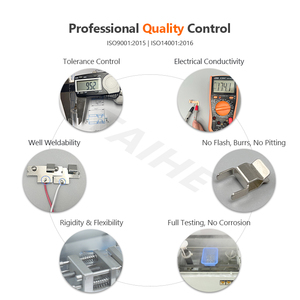

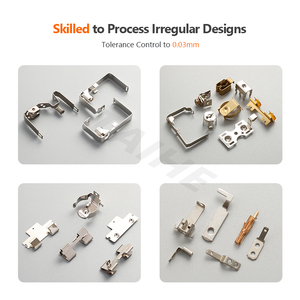
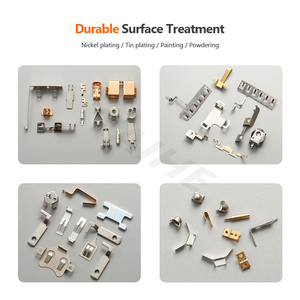























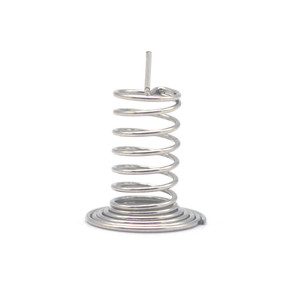



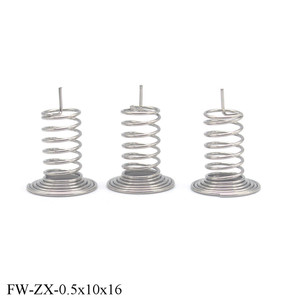


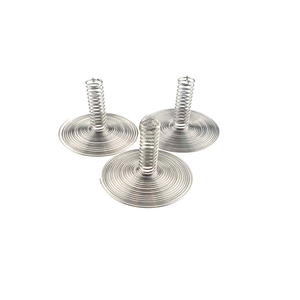

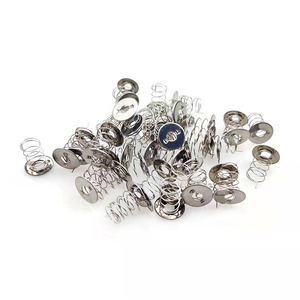








The round PCB mounted contact spring is widely utilized. It is employed in many sectors due to its flexibility, compactness, and ease of installation. These spring contacts provide consistent performance to ensure reliable connection with minimal signal degradation. Common applications include telecommunications equipment, consumer electronics, and medical devices. This versatility makes them an integral component in most electronic systems.
Flat spring contacts are another important type that is often used in low-profile devices. Unlike other spring contacts, these have a slim profile and flat design that can be easily integrated into space-constrained devices. These spring contacts are widely applied in industries where low space occupancy is a must. Such industries are portable gadgets, mobile communication devices, and compact medical apparatus. Their even distribution of force results in stable, low-resistance connections.
This spring contact is ideal when both strength and compact dimensions are needed. The cylindrical form ensures good mechanical stability and is particularly useful under conditions requiring resistance to vibrations and shocks. Common applications are in automotive electronics, industrial controls, and aerospace systems, where reliable, long-lasting contacts are vital. Their robust build means they can withstand demanding operating environments while sustaining uninterrupted electrical transmission.
Dome-shaped spring contacts are designed to offer a strong and resilient contact point. Their unique shape aids them in being employed in stackable connectors, power circuits, and high-frequency applications, where superior conductivity and minimal wear are needed. The fabrication of these spring contacts make them ideal for heavy-duty applications in defence electronics and power distribution systems, as well as in high-performance computing environments.
PCB-mounted spring contacts are crucial components in modern electronic assembly. Their main purpose is to provide an elastic and mechanical interface for electrical connections. This enables them to accommodate misalignments, movements, and thermal expansions. Their advantageous design ensures that they take up little space while providing exceptional functionality as it integrates seamlessly with other electronic elements. They are also available in diverse configurations, such as circular, cylindrical, and dome-shaped. This variety permits specification according to needs in given applications. These devices allow stacking and enable multiple connections through a single contact point for additional functionality.
The selected materials for mounting these springs are of utmost importance to their performance. With this in mind, stainless steel, copper alloy, and brass are often used due to their superior elasticity and resistance to corrosion. In addition, to optimize conductivity, these metals must be coated with materials like gold, silver, or nickel. It ensures that the resulting contact has minimal signal loss. The spring contacts are made with premium materials to resist mechanical wear and tear. This enhances their lifespan in environments with extreme temperatures or fluctuating dynamic forces.
PCB mounted spring contacts have a broad range of application across industries. These electronic devices assemble sensor systems in telecommunications, automotive space, and medical sectors to ensure reliable connectivity. More importantly, the adaptability of these spring contacts facilitates their employment in portable gadgets, industrial machinery, and even defence systems. They fulfil the role of providing stable electrical connections in environments where resilience and accuracy become critical. These spring contacts are crucial components in power delivery systems and connectors for power and signal transmission in heavy industrial applications.
The installation of these springs is simple. As such, they can be integrated into existing automated manufacturing processes without much effort. The integration into SMT (Surface Mount Technology) processes allows for seamless placement and soldering to the PCB, increasing production efficiency. Their compact size relative to other connectors eliminates complexity during the assembly process. Their incorporation results in lower assembly costs with additional savings in real estate on the PCB.
The value of spring contacts is assured through established industry standards. Therefore, they fulfill requirements on performance, reliability, and interoperability. Their presence in almost all electronic assembly allows for enhanced design flexibility and system integration. Moreover, the springs are easy to use, meaning more efficient manufacturing processes and lower production costs. These factors all contribute to the increase in the demand for these products.
The rising demand for high-performance electronic devices is a driving force behind spring contacts' increasing market value. These spring contact devices are preferred in industries such as automotive, telecommunications, and consumer electronics. This is due to their unique ability to maintain reliable connections in compact and dynamic environments. In addition, with the current trend towards miniaturization in technology, the need for versatile and space-saving components has never been greater.
Spring contacts are appealing investments that offer tangible benefits. These contacts reduce assembly complexities and enhance system dependability over time. This affects operating costs and maintenance. In addition, their long lifespan lessens the need for replacements and repairs. Therefore, enterprises in both the consumer and industrial sectors experience cost savings. The demand for dependable, high-quality contact solutions drives the profitability of these springs.
A major attractant of these spring contacts is their customizability. The springs can be tailored for specific applications and can also be produced on a scalable basis. These factors make them suitable for small as well as large-scale production. Henceforth, this adaptability extends to diverse industries. It includes everything from handheld devices to large industrial machinery while meeting unique specifications. As a result, PCB-mounted spring contacts are an attractive option in many applications.
The material of the spring contact to be mounted on the PCB influences performance greatly. Copper alloys, stainless steel, and precious metal plating are often used to balance conductivity and elasticity. The selected material must be mechanically strong and corrosion-resistant to guarantee a long lifespan. For high-temperature applications, temperature endurance must also be considered, as the chosen material will need to withstand without losing its mechanical properties.
The spring constant is a key parameter that should not be overlooked as it determines the contact force exerted by the spring. A higher spring constant will mean more force, which is great for heavy loads or high-cycling applications, while a lower one will be better for delicate components. It is, therefore, important to select the ideal balance for the particular application since insufficient force can lead to poor connections, while excessive force could damage the PCB or adjoining parts.
The size and form factor of the spring contact play a crucial role in determining their compatibility with the given PCB design. The spring contact should fit into the existing space constraints, as well as integration with other components on the PCB. The footprint and height of the spring contact must also be considered for effective mating with connectors or other components. This consideration is particularly relevant in products with tighter spaces, such as smartphones and wearables.
Environmental resistance is a very important factor to consider, especially for applications intended for exposed conditions. Spring contacts must be resistant to moisture, dust, and extreme temperatures, as well as oxidation and corrosion. Select springs with environmental sealing or coatings to improve their resilience over systems with such harsh operating conditions. This practice ensures the performance and reliability of the contact over time and reduces maintenance costs for users.
A1: PCB-mounted spring contacts are used in automotive, telecommunications, medical devices, and consumer electronics. They are mostly employed where dependable electrical connectivity must be maintained despite movement or vibration.
A2: The spring contacts eliminate wear on the connection by absorbing shock and vibration. They also lessen the mechanical strain on electrical components. This practice results in decreased overheating and failure rates, boosting deices' overall longevity and dependability, especially in dynamic environments.
A3: Spring contacts need hardly any maintenance at all. Nevertheless, regular inspections are necessary to look for wear, corrosion, or damage, especially in harsh conditions. One reason is that environmental elements might degrade the springs over time. However, in normal situations, spring contacts require minimal maintenance to function properly well.
A4: Yes, these spring contacts can be coated with nickel or gold, increasing their resistance to oxidation and corrosion. Moreover, seals or potting may also be used in certain designs, enhancing their resistance to moisture, dust, and other environmental elements. This practice allows them to perform well in wet or dusty settings.
A5: The materials used to make the spring contacts significantly impact conductivity, elasticity, and corrosion resistance. Common materials like brass or stainless steel offer a good mix of strength and durability. Ultimately, the selection of material defines the contact's effectiveness in certain applications.